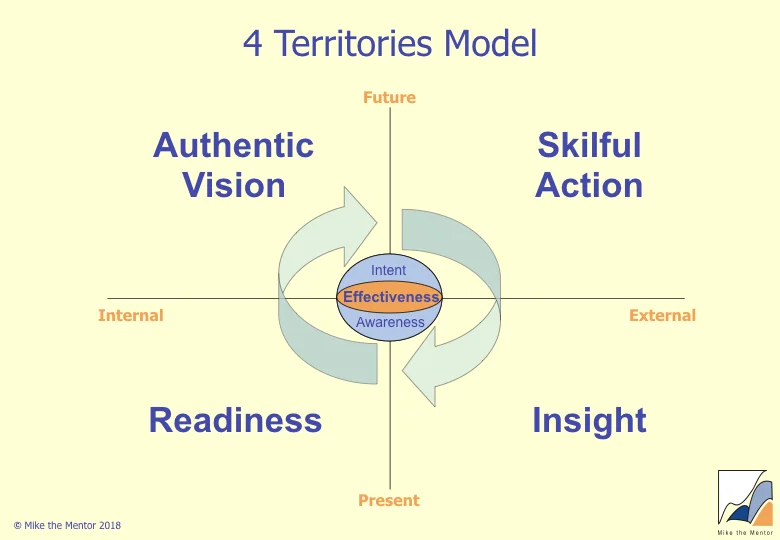Single, Double, and Triple-Loop Change
/One of the reasons why we sometimes struggle to make change happen is that we are trying to create the wrong kind of change! There are 3 major kinds of change, and it's important to understand the differences between them.
When we try something and it doesn't work, our usual reaction is to repeat the action, perhaps doing it more forcibly or for longer. For example, if we have failed to persuade someone of our point of view, we might restate it, or say what we said before more emphatically or at greater length. So basically no change.
If this fails to get the desired result, we might then try different behaviours or actions, for example coming up with additional reasons, or cajoling or pulling rank on the person to get them to agree with our point of view. This is single-loop change.
If we try various different actions and none of them succeed, we often just give up! But, if we were to wonder about what else we could do to create the change we want, we can consider different ways of thinking about or framing the situation (double-loop change). This is more difficult than single-loop change as we may have to let go so some of our cherished opinions or beliefs about the situation. In the influencing example this may include recognising that the other person's point of view may be valid or right, that it may not be necessary for my view to prevail, and even that my views and goal may be wrong, or at least only some of many possible valid views and goals.
It may be that being more flexible in my thinking, framing the situation differently, and changing the goals I am pursuing enables the problem to be solved. If it doesn't, then what other options do I have to move the situation forward? The next, and most challenging option, is to shift our very way of being in the world (triple-loop learning). Again using the influencing example, this might involve shifting from a competitive, win-lose position to an attitude of curiosity about what the disagreement can teach us about ourselves and the issue we are trying to resolve.
The diagram, which is based on Hargrove's Transformational Coaching model on page 28 of Masterful Coaching, shows the relationship between these three different kinds of change.
To summarise: the three aspects of Transformational Change are (in order of increasing difficulty and complexity):
Incremental improvement (single-loop learning). Continuously improving my current practices and improving my skills so that I can achieve my goals more efficiently. This is adaptation at the level of behaviour or tactics - ie, if what I'm doing doesn't work, I explore other behaviours or tactics. If this doesn't deliver the results I want, then I may need to move to double-loop learning.
Thinking differently (double-loop learning). Fundamentally reshaping my patterns of thinking by changing my goals and/or strategies so as to break through impasses, become more effective, and learn to do different things. This is adaptation at the level of thinking or strategy, and involves my examining my assumptions about the situation. By exploring different ways of thinking about the problem or situation, a whole new set of possible behaviours can emerge. If this me to solve the problem I'm facing, fine. If not I look for other assumptions I could change which might give me fresh ways of thinking about the problem. If I'm still not successful, then I may need to move to triple-loop learning
Transforming who I am (triple-loop learning). Creating a shift in my context, identity or point of view about myself. This is adaptation at the level of my way of being and of seeing the world, and my self in it. The question I ask myself is "How can I shift myself to a different way of being in this situation to create new options, and to help the wider system shift?". This shift in being or seeing can then lead to a shift in thinking, goals and strategies, which in turns opens up new possibilities for behaving. Some of the major ways of being (or action logics) possible are shown on this article on Vertical Development.

